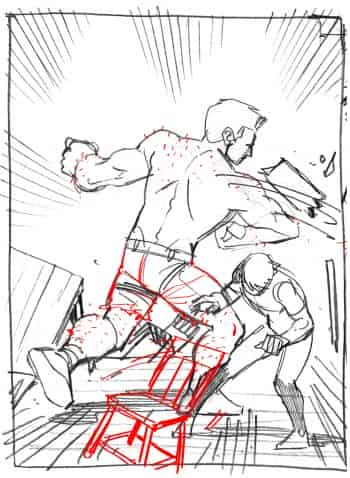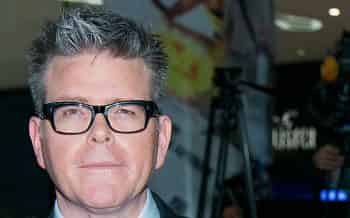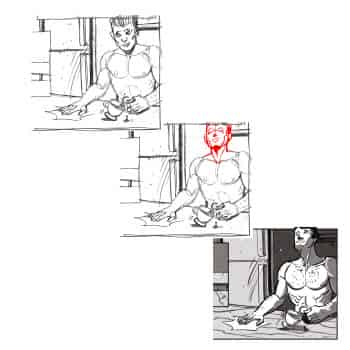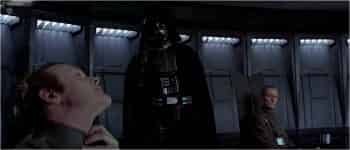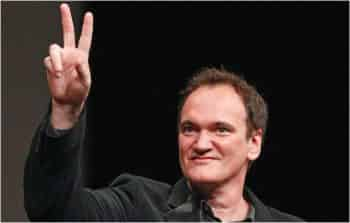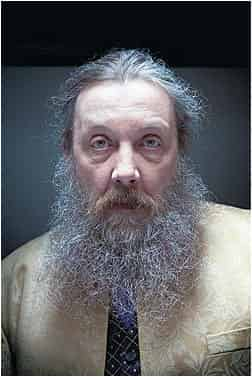Suppléments
-
Les retouches (Un géant parmi les hommes– Partie II)
-
Quoi écrire quand tout a déjà été dit?
Nous aimons lire sur des auteurs qui parlent de leur processus créatif. Nous sommes tombés sur une entrevue de Sam Esmail homme-orchestre derrière la série Mr Robot qui parle de sa motivation première lors de l’élaboration de ses scénarios : « And I was hamstrung in the first season because I was like, well, this is really only the first act, I need this thing to happen, I need this plot, whatever, the hack thing to happen. Because for me, plot is always an excuse to explore characters. ‘Cause who cares? The plot is the same plot that we see in basically every movie and TV show. But how we tell that story, what choices these characters could make … » (Jen Chaney , Gazelle Emami and Matt Zoller Seitz. « Mr. Robot Creator Sam Esmail on How He Handles Criticism of the Show », www.vulture.com, September 28, 2016).
Nous trouvons amusant de mettre en relation cette affirmation en lien avec les propos de Christopher McQuarrie qui a une longue carrière de scénaristes au cinéma et plus récemment de réalisateur. Il revenait dans une longue entrevue accordée sur le développement de son scénario Usual Suspect. Il mentionnait alors : « There’s a part of us that wants to see the bad guy get away, that wants to see this guy outsmart authority, and beat the system. That to me is when a movie is really good: when no one is an idiot. Early on in the development of the Suspects script someone asked me why Kujan was chasing this guy Keaton. What does he care? Did Keaton kill his partner? No, he’s just passionate about his job. You don’t have to be Vincent Van Gogh to be passionate about what you do[…] So many movies use revenge as motivation for characters. But I think that, unless you’re analyzing the mind-set itself, it’s a bad motivation. » (« Christopher McQuarrie Gets Verbal on the Usual Suspects », cinetropolis.net, April 13, 2014).
Bien que ces deux citations proviennent de contextes différents, elles sont, pour nous, complémentaires. L’exploration du personnage doit passer par une part d’ellipse, sinon la verbalisation des choix du personnage détruit toute spontanéité ainsi que les contradictions inhérentes aux comportements humains.
-
Les retouches (Un géant parmi les hommes– Partie I)
-
Prendre le temps de respirer
En relisant un commentaire de Film Crit Hulk concernant l’épisode 7 de la série Star Wars (Force Awakeness) (Film Crit Hulk Smash: « STAR WARS: THE FORCE ALLUDED TO… », birthmoviesdeath.com, June 28, 2016), nous avons souligné de nombreux passage, mais nous avons retenu les deux suivants :
« HULK FEELS LIKE HULK NEEDS TO SHOUT FROM THE ROOFTOPS. THERE IS PLENTY OF « DANGER » IN THE MOVIE, BUT THERE ISN’T ANY DRAMA OR DOUBT OR ACTUAL CONFLICT BEING PLAYED. AND HE CONSTANTLY FINDS HIMSELF IN SITUATION WHERE CHARACTERS HAVE TO WASTE TIME EXPLAINING WHAT JUST HAPPENED. BUT J.J. OBVIOUSLY REALIZES THIS INFORMATION SUCKS TO DELIVER SO HE TRIES TO ZAP THROUGH EVERYTHING WITH PERSONALITY AND PIZZAZ BEFORE DISTRACTING US WITH A NEW SHINY ELEMENT OF « DANGER, » WHICH DOESN’T ESCALATE, BUT JUST CREATES THE LAW OF DIMINISHING RETURNS. AND IT SEEMS LIKE J.J. IS EVEN AWARE THAT THIS DOESN’T « WORK » SO HE’S TRYING TO STREAMLINE AND MOVE AND FIX AS QUICK AS POSSIBLE.
[…]
WAS EXPOSITION SIMPLY NOT « DELIGHTFUL » ENOUGH? DOES EXPOSITION STOP THEM FROM RUSHING THROUGH EVERY SCENE TO GET TO THE DESIRED EFFECT? HULK SORRY, BUT EFFECTIVE EXPOSITION IS ACTUALLY REALLY IMPORTANT TO MOVIES (EVERYONE MAKES FUN OF INCEPTION, BUT THE FIRST HALF OF THAT MOVIE IS WHAT ALLOWS THE SECOND HALF TO WORK WITHOUT STOPPING TO EXPLAIN ANYTHING). SO IT’S TIME TO TALK ABOUT ONE OF THE MOST IMPORTANT SCENES IN THE ORIGINAL STAR WARS.
THAT WOULD BE THE CONFERENCE ROOM SCENE. YOU KNOW THE ONE:
THIS SCENE, LIKE MANY OTHER GREAT EXPOSITION SCENES, WORKS BY UNDERSTANDING THAT, YES, EXPOSITION IS BORING IN AND OF ITSELF. BUT THAT’S WHY YOU BEND OVER BACKWARDS TO FIND WAYS TO MAKE IT INTERESTING/FULL OF CONFLICT. LIKE THE FAMOUS SNAKE PLISSKEN NEGOTIATION, THERE’S STAKES AND AN ART OF GROUNDING IT IN REAL CHUTZPAH. AND IN THIS FAMOUS SCENE, THERE’S THAT AWESOME FRAMING CHOICE WITH TWO PEOPLE ARGUING SO IT FEELS LIKE JUST AN INTENSE CONVERSATION BETWEEN THEM. THEN THE SWEEPING WAY GRAND MOFF TARKIN COMES INTO THE ROOM. AND THEN OF COURSE, THERE’S THE WAY VADER TAKES CHARGE OF THE SITUATION (WITH A GUY WHO FEARLESSLY TAKES HIM ON BY THE WAY, AN IMPORTANT HUMANIZING FEATURE FOR VADER) AND THEN ISSUES ONE OF THE MOST ICONIC LINES OF THE ENTIRE SERIES. ALL IN ALL, THE SCENE IS FLIPPING FANTASTIC. »
Et c’est très vrai, la scène de la salle de conférence fonctionne à merveille. Cependant, il faut faire attention de créer artificiellement ces tensions uniquement pour dynamiser une scène.
-
Le processus créatif est une conversation
Nous avons déjà fait mention qu’aujourd’hui tout a pratiquement déjà été raconté et dans ce contexte l’art ne naît pas du néant, l’écrivain, le peintre, le réalisateur, etc. crée son œuvre en communion avec son environnement. Dans ces circonstances, nous sommes admiratifs d’un cinéaste comme Quentin Tarantino qui ne craint d’exposer ses références.
Andrew Wheeler mentionne : « Star Wars was inspired by Flash Gordon. A Song of Ice and Fire owes a debt to The Lord of the Rings. Harry Potter offers an answer to The Chronicles of Narnia. Breaking Bad takes its lead from The Godfather. Jason Bourne took shape against James Bond.
Art exists in conversation with that which came before it, and that’s as true in comics as in any other narrative form. […]Everyone who tells stories or creates art is a critical thinker, responding to ideas with ideas of their own. There aren’t just two types of people. Makers are critics.» (« ‘If You Don’t Like It, Make Your Own’ Is a Terrible Argument, But A Great Idea », http://comicsalliance.com, September 2, 2015).
C’est pourquoi nous n’avons aucun complexe à présenter les références qui ont inspiré des passages ou même des aventures complètes.
Cependant, le plus troublant réside dans les emprunts involontaires, il est possible que nous ayons enregistré certains passages d’un film ou d’un roman sans que l’on s’en rappelle explicitement. Kate Willaert évoque ce phénomène : « Being such a huge Jack Kirby fan, is it possible Alan Moore read this story at some point and simply forgot about it? Or for that matter, could “The Architects Of Fear” writer Meyer Dolinksy have read it?
A creator forgetting they encountered an idea elsewhere isn’t an uncommon phenomenon, especially in the music world. Paul McCartney has a famous story about how while writing “Yesterday,” he became paranoid that he might’ve accidentally nicked it from somewhere. After playing it for just about everyone he knew and no one saying they recognized it, he felt confident that it was completely original. » (« Did Watchmen Steal From The Outer Limits, Or From Jack Kirby? », http://www.comicsbeat.com, August 10, 2015).
Dans ces circonstances, il faut arrêter la course au plagiat. Il faut se décomplexer, admettre nos influences et les honorer. Le plagiat devrait se limiter aux copies grotesques et non aux emprunts sinon nous ne pourrons plus voir aucun film de Tarantino.



